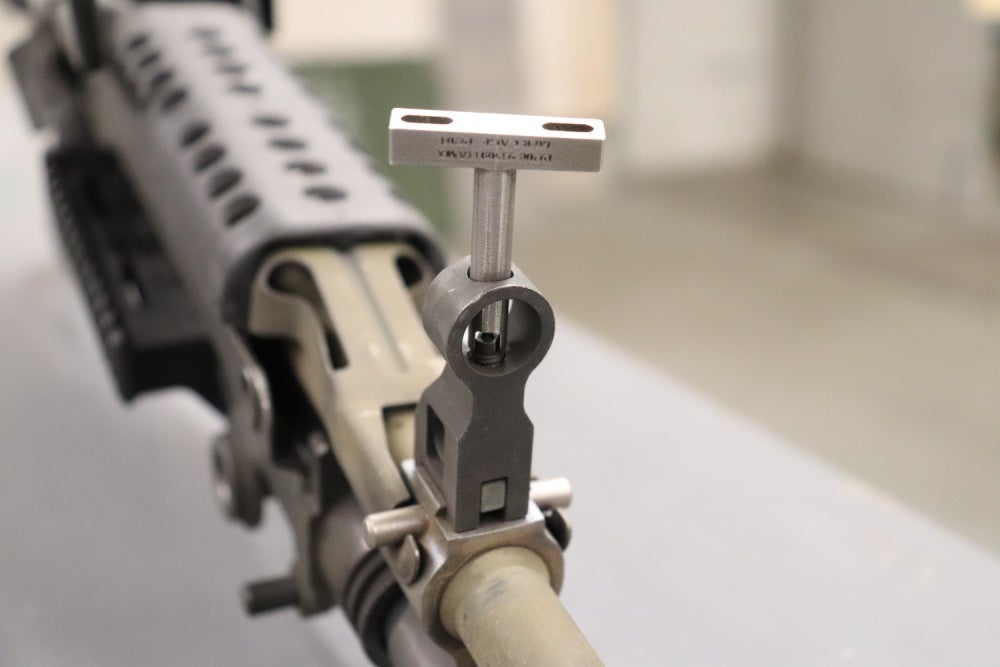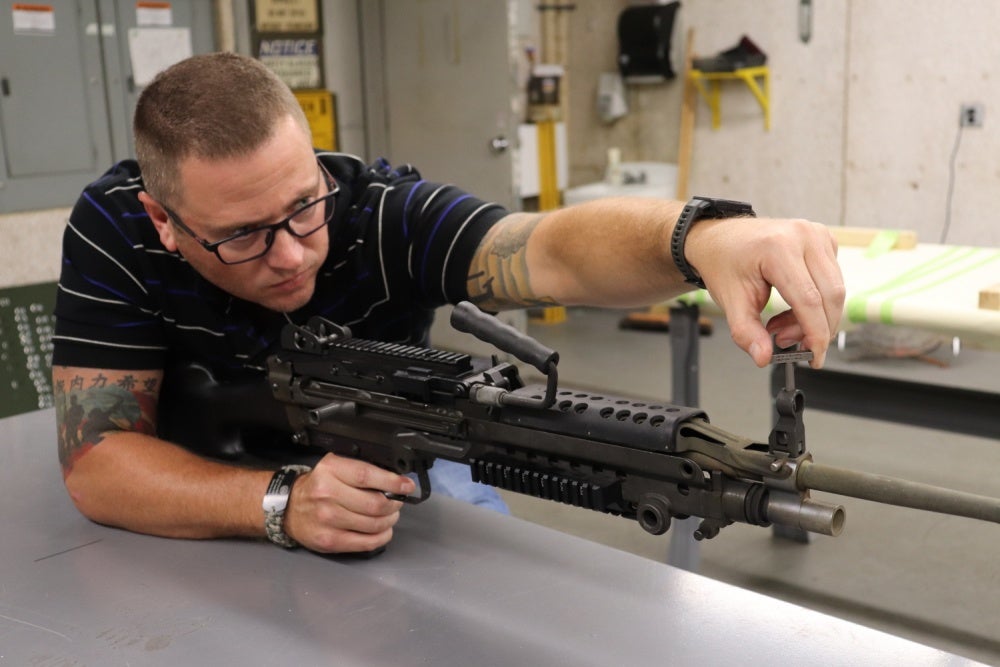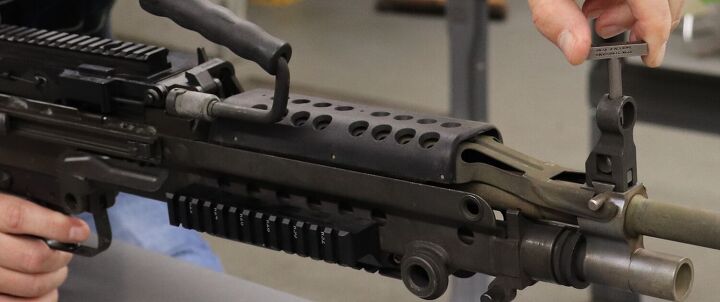The U.S. Army reports that for the first time an additively manufactured item has been qualified and provisioned for production. While not as cool as a suppressor or other 3D printed accessories, the humble M249 Sight Adjustment Tool is an important milestone. Moreover, it contributes to saving money, which doesn’t hurt.

U.S. Army Provisions 3D Printed M249 Sight Adjustment Tool – A close-up of an M249 sight adjustment tool inserted into the front sights of an M240 machine gun. (Photo by Randl Besse, Deputy Project Manager Rock Island Arsenal, Joint Manufacturing Technology Center). (Photo Credit: U.S. Army)
The item is a T-shaped wrench, used to adjust the height of the front sight post. While the tool appears very simple, it is apparently available from its manufacturer only as part of a much larger (expensive) bundle of accessories. A direct replacement can, therefore, become unobtainable because purchasing cannot be considered cost-effective.
With this in mind, a team lead by Phillip Burton at Tank-Automotive and Armaments Command’s Rock Island Arsenal (TACOM) – Joint Manufacturing Technology Center (RIA -JMTC) selected this tool to showcase their capability of enabling the Army’s supply chain.

U.S. Army Provisions 3D Printed M249 Sight Adjustment Tool – David Blaylock, Simulation & Test Range Division chief at Rock Island Arsenal – Joint Manufacturing Technology Center, uses an M249 sight adjustment tool on the front sights of an M240 machine gun. (Photo by Randl Besse, Deputy Project Manager, Rock Island Arsenal, Joint Manufacturing Technology Center) (Photo Credit: Randy Tisor)
One could argue that the relatively simple shape of the wrench could readily be achieved with few steps of machining from stock material, as the original ones are likely manufactured. Moreover the result, probably obtained via Selective Laser Melting, is not a great example of the geometric complexities which are obtainable through Additive Manufacturing (AM). However, this is not the main goal of the endeavor, which rather focuses on demonstrating the ability to offer “spare parts that are either obsolete, have really long lead-times, have no source or have no technical data package”, as Burton states.
Going after simple items of limited availability seems to be the strategy of the U.S. Army in implementing AM processes. We’ve seen already a similar concept in the research focused on polymer 3D printing, and now we see an application on metal components. It will be interesting to see where these initial steps will take the Army, the potential for weight reduction and component consolidation offered by AM is ready to be tapped into.
Photos and quotes from www.army.mil.
 Your Privacy Choices
Your Privacy Choices
